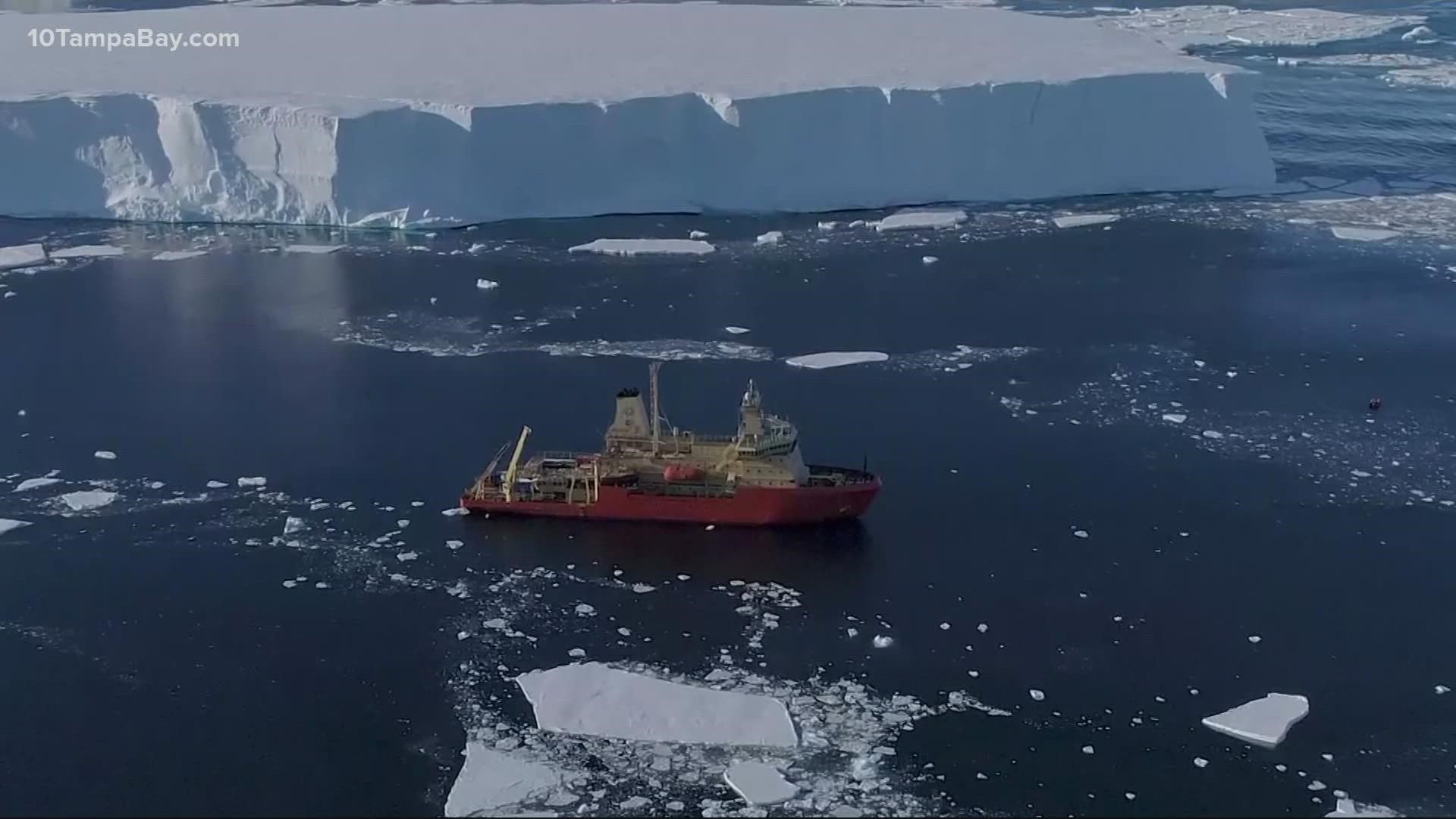Our changing climate could end up releasing a "doomsday glacier."
Glaciers provide a scientific record of how the earth's climate has changed over thousands of years. Warmer waters are eroding some of the world's oldest ice sheets as well as some of the largest and at-risk glaciers.
Thwaites Glacier in Antarctica, the widest glacier in the world, may be far away from Florida in the South Pole, but it's melting rapidly.
For comparison, the glacier is roughly the size of the sunshine state at 74,000-square-miles. Right now, the Thwaites Glacier is one of the fastest melting glaciers and is responsible for about four percent of global sea-level rise. But, that number could increase significantly.
A recent study has found that warmer ocean temperatures are not just melting the glacier. The water seeping underneath the glacier is rapidly cracking the ice shelf — a major lifeline that the glacier is attached to.
Concerned scientists worry that this ice shelf could collapse within the next few years.
If that ice shelf fails and allows the glacier to flow and melt freely, it could raise global sea levels by several feet. That will lead to an additional 10 feet of sea-level rise if it draws surrounding glaciers with it, which will endanger even more coastal communities, like the Tampa Bay area.
Observations from the St. Petersburg tidal gauge show that sea levels in the Bay have risen 0.11 inches on average each year, totaling roughly 8.5 inches within that time span.
Another concern is that if the Thwaites Glacier were to collapse, it could also destabilize other glaciers in the West Antarctic.

